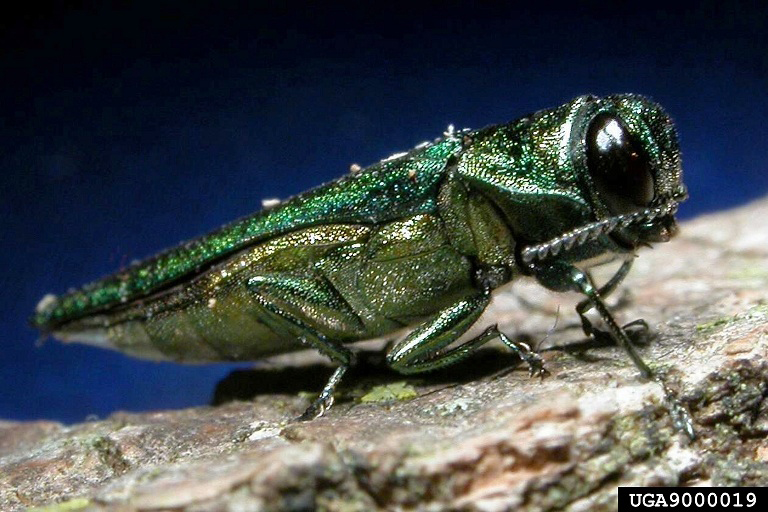
Homeowners and taxpayers are picking up most of the tab for damages caused by invasive tree-feeding insects that are inadvertently imported along with packing materials, live plants, and other goods. That's the conclusion of a team of biologists and economists, whose research findings are reported in the journal PLoS One this week.
The authors explain that non-native, wood-boring insects such as the emerald ash borer and the Asian longhorned beetle exact an estimated $1.7 billion in local government expenditures, and approximately $830 million in lost residential property values each year.
"Once they become established, invasive species are very difficult to eradicate, and they result in billions of dollars in damages each year," said Juliann E. Aukema, first author and a scientist with UC Santa Barbara's National Center for Ecological Analysis and Synthesis (NCEAS). The research team, composed of scientists from U.S. and Canadian universities and the U.S. Forest Service, focused on invasive insects that feed on trees in the U.S. They noted that other countries face the same problems with foreign species.
Aukema and her co-authors provide the most comprehensive estimates of costs due to forest invasion that are currently available for the U.S., according to the team. They also predict the probability of future costs and explain the benefits of reducing the rate of invasion.
The pests are a byproduct of global trade, according to Aukema. "Obviously, international trade has tremendous benefits, but it also has costs," she said. "The regulations we currently have aren't keeping the pests out. We need to strengthen regulations and enforcement of them to protect our forests and our economy."
Wood-boring insects are not the only insects that are causing economic impacts, according to the researchers. Foliage feeders and sap feeders cause an estimated $410 million and $260 million, respectively, in lost residential property value each year.
The researchers calculated the economic damages for five cost categories: federal governmental expenditures, local governmental expenditures, household expenditures, residential property value losses, and timber value losses to forest landowners.
The team also calculated a 32 percent risk that a new borer would invade in the next 10 years, causing even more damage than previous borers.
The study used detailed economic assessments of three highly damaging pests: emerald ash borer, gypsy moth, and hemlock woolly adelgid. The researchers also used an exhaustive database of established non-native forest insects, and a novel modeling approach. The authors have developed an analytical framework that can be used in any country where data are available. The framework can be easily adapted for estimating costs in other natural resource sectors, including fire, disease, and water quality, at scales from municipalities to nations.
The journal article resulted from a study by an NCEAS working group with support from the Nature Conservancy. Co-authors include Brian Leung, McGill University, Montreal; Ken Kovacs, University of Minnesota; Corey Chivers, McGill University, Montreal; Kerry O. Britton, U.S. Forest Service, Va.; Jeffrey Englin, Arizona State University; Susan J. Frankel, U.S. Forest Service, Calif.; Robert G. Haight, U.S. Forest Service, Minn.; Thomas P. Holmes, U.S. Forest Service, N. Carolina.; Andrew M. Liebhold, U.S. Forest Service, W.Va.; Deborah G. McCullough, Michigan State University; and Betsy Von Holle, University of Central Florida.
Related Links
National Center for Ecological Analysis and Synthesis
PLoS ONE Article



